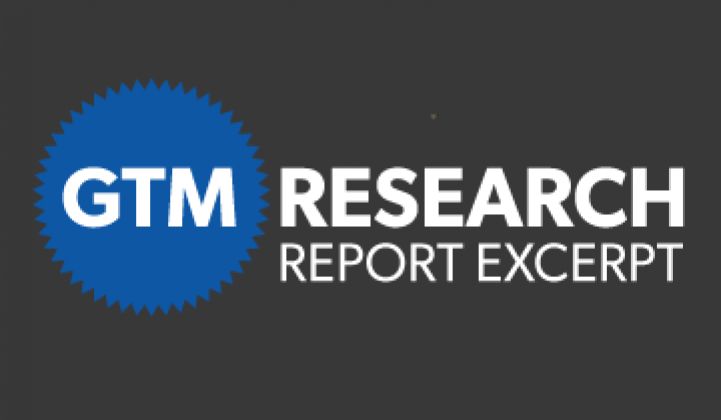In the following excerpt from the recent GTM Research report U.S. Residential Solar PV Customer Acquisition: Strategies, Costs, and Vendors, we look at the opportunities facing module and inverter suppliers in the residential solar customer acquisition market.
The vast majority of leads are generated by installers, financiers, lead aggregators, and originators. The biggest missed opportunity we see in customer acquisition is the lack of participation from equipment suppliers, specifically module and inverter suppliers. SunPower is the major exception, of course, as it offers its modules along with its lease and therefore has added incentive to supply its installer partners with leads.
According to GTM Research's U.S. PV Leaderboard, SunPower was the top supplier of modules to the U.S. residential solar market in the first half of 2013, with a 20.5 percent market share.
Generating leads can be just as beneficial to suppliers that don't offer a lease. In fact, this may be even more critical for some other module providers that rely on just a few installers for the majority of their business. For instance, according to the U.S. PV Leaderboard, in Q1 2013 SolarCity accounted for 60 percent of Trina's shipments and 77 percent of Kyocera's shipments to the residential market. LG Electronics' largest customer was Verengo, which procured 56 percent of the manufacturer's supply. On the inverter side, Enphase Energy is the exclusive provider to Vivint Solar.
Providing leads to installers helps suppliers in a few key ways:
- Suppliers can ensure a guaranteed pipeline for their modules or inverters from a given installer, helping them compete against other equipment providers.
- At the same time, suppliers tend to have greater visibility into the national solar market than do most local and regional installers. They have the ability to react to changing market dynamics by shifting their lead generation efforts to the state markets that they wish to target at any given time.
- Manufacturers can capitalize on economies of scale that will make many marketing strategies less expensive on a per-customer basis. For example, a module manufacturer selling into states throughout the country can run a national online ad campaign that directs customers to different installers in each region; this is more cost-effective than each of these installers running a separate local ad campaign. Suppliers can also potentially receive volume discounts on leads purchased from aggregators that they distribute to installers.
Some of the challenges for equipment vendors providing leads are:
- Suppliers tend to sell (and small installers tend to buy) through distributors. It may only be possible to buy or generate leads for larger installers.
- Suppliers must establish a way to ensure that any closed customers from leads they supply receive their modules or inverters.
Module manufacturers' levels of involvement in B2C marketing and the process of customer acquisition can vary greatly. A limited number of suppliers have made a significant effort to market their products directly to consumers. One of the most well-known examples is Yingli Solar's sponsorship of the 2010 World Cup in South Africa. Yingli presumably found this move successful, as the company will also sponsor the 2014 World Cup in Brazil. A few similar initiatives we've seen in the U.S. include JinkoSolar sponsoring the San Francisco 49ers and Canadian Solar sponsoring both the San Francisco Giants and the New York Yankees.

Additionally, some suppliers do purchase or generate leads for installers, while others will focus exclusively on B2B marketing and leave end-customer lead generation to installers, even though these large manufacturers have the resources that many small solar companies do not. There has been very little lead generation on the part of inverter suppliers and distributors. The former may be due to the more consolidated inverter market. However, even with less competition for an installer's business, inverter suppliers have an incentive to increase the market shares of their customers. The same goes for distributors.
Installers we spoke with generally report receiving very few leads from suppliers, and any leads they do receive tend to be of low quality. We believe there is a significant opportunity for suppliers to increase their own market shares by providing qualified leads to their installer customers.
***
Report author Nicole Litvak will be speaking about the U.S. residential solar market at next month's Solar Market Insight conference in San Diego. For more insight on the residential solar customer acquisition space, download the free report brochure today.



